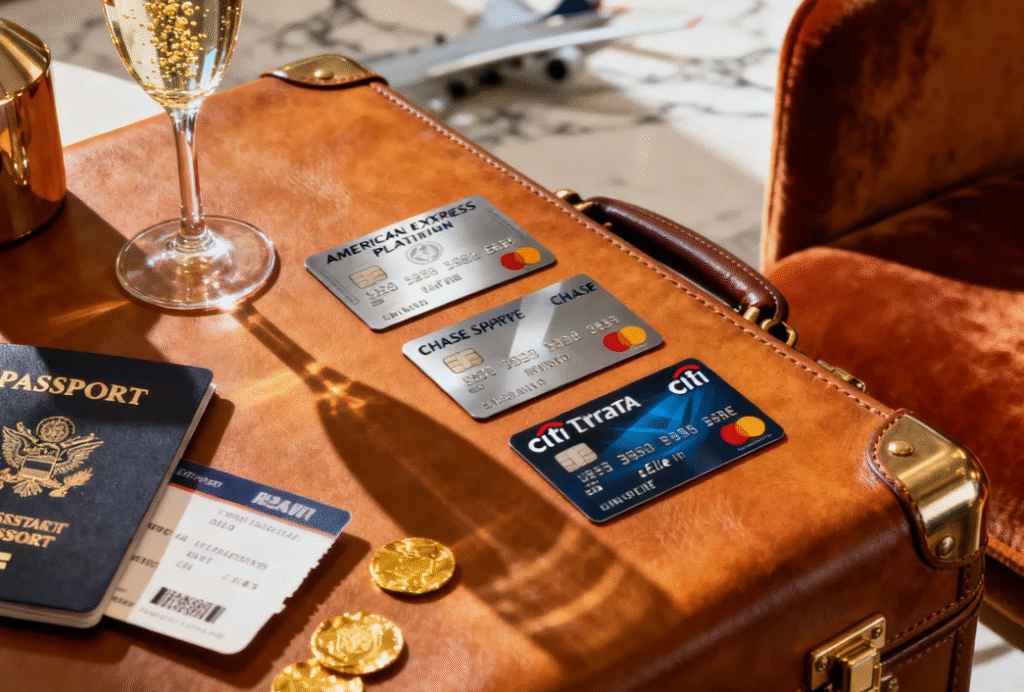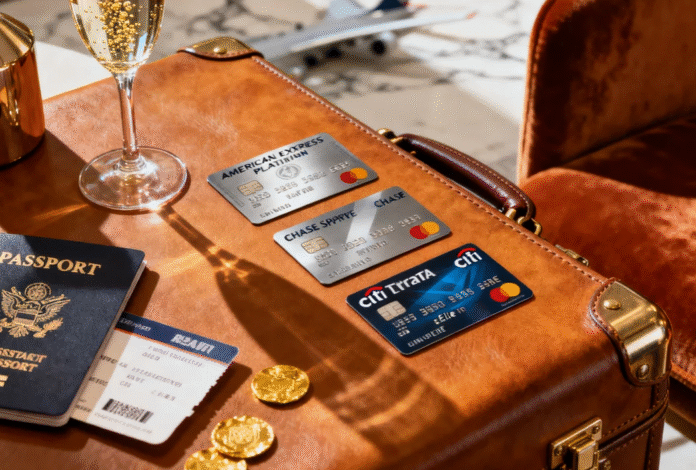Travel credit cards have long promised luxury perks—think airport lounge access, free checked bags, and status upgrades. But with annual fees rising fast, experts say it’s time to crunch the numbers before swiping for a shiny new card.
American Express recently announced that both the consumer and business versions of its Platinum card will now cost $895 a year, up from $695—a 29% jump. Chase followed suit earlier this summer, bumping the annual fee for its Sapphire Reserve from $550 to $795, a 45% increase. And Citi just entered the premium space with its new Strata Elite card at $595 per year.
Even mid-tier cards are trimming perks. Capital One’s Venture X Rewards and Venture X Business cards, which cost $395 annually, will no longer allow cardholders to bring guests into its lounges for free starting in 2025.
The message is clear: higher fees mean you have to carefully weigh whether the perks are truly worth it.

“Annual fees are not inherently bad; you just need to make sure you’re getting value from the card,” said Ted Rossman, senior industry analyst at Bankrate. “It’s getting harder to maximize, though.”
One Common Habit That Cancels Out the Perks
If you carry a balance from month to month, experts say travel cards almost never make sense.
“Any interest that you owe will easily diminish the value of any of these benefits,” said Sally French, travel expert at NerdWallet.
Premium travel cards often carry higher interest rates, averaging 25% to 30%, compared with about 20% across general credit cards.
“Generally speaking, rewards cards charge higher rates,” Rossman added.
Step One: Pick Broad vs. Brand-Specific
Travel cards typically fall into two categories:
- Co-branded cards (linked to airlines, hotel chains, or cruise lines)
- General travel cards (not tied to a single brand)
If you’re loyal to one airline or hotel, a co-branded card can unlock valuable perks such as free checked bags, priority boarding, or bonus points on brand purchases. But the catch is obvious: your Southwest card won’t help on United.
That said, some airlines and hotels belong to global alliances, meaning you may be able to transfer points across brands.
If you prefer flexibility, a general travel card may be better. These cards let you earn and redeem points more widely, though their annual fees often rival those of brand-specific cards.
Step Two: Compare Fees vs. Benefits
Annual fees for travel cards range widely—from $95 to $895. Those at the lower end may lack premium perks, but they can still provide decent rewards without the big commitment.
Most premium cards include overlapping benefits, such as TSA PreCheck or Global Entry credits and generous sign-up bonuses if you hit a spending minimum. For frequent travelers, just one perk—like free checked bags for the whole family—could make the card pay for itself after a single trip.
The key, French said, is to study the issuer’s perks list in detail before applying.
Step Three: Match the Card to Your Lifestyle
While glossy perks are tempting, experts say the best card comes down to your travel and spending habits:
- Rare travelers → stick to a no-fee or low-fee travel card.
- Frequent fliers on one airline → a co-branded card could save money and earn upgrades.
- Frequent but brand-agnostic travelers → a general travel card provides flexibility.
If you already have a premium card but aren’t using it enough to justify the annual fee, Rossman suggests downgrading rather than canceling outright—this preserves your credit history and avoids potential score drops.
Premium travel credit cards can still deliver outsized value—but only if you’re a frequent traveler, disciplined about paying balances in full, and savvy enough to take advantage of the perks. Otherwise, that glossy metal card may be costing you more than it’s giving back.
